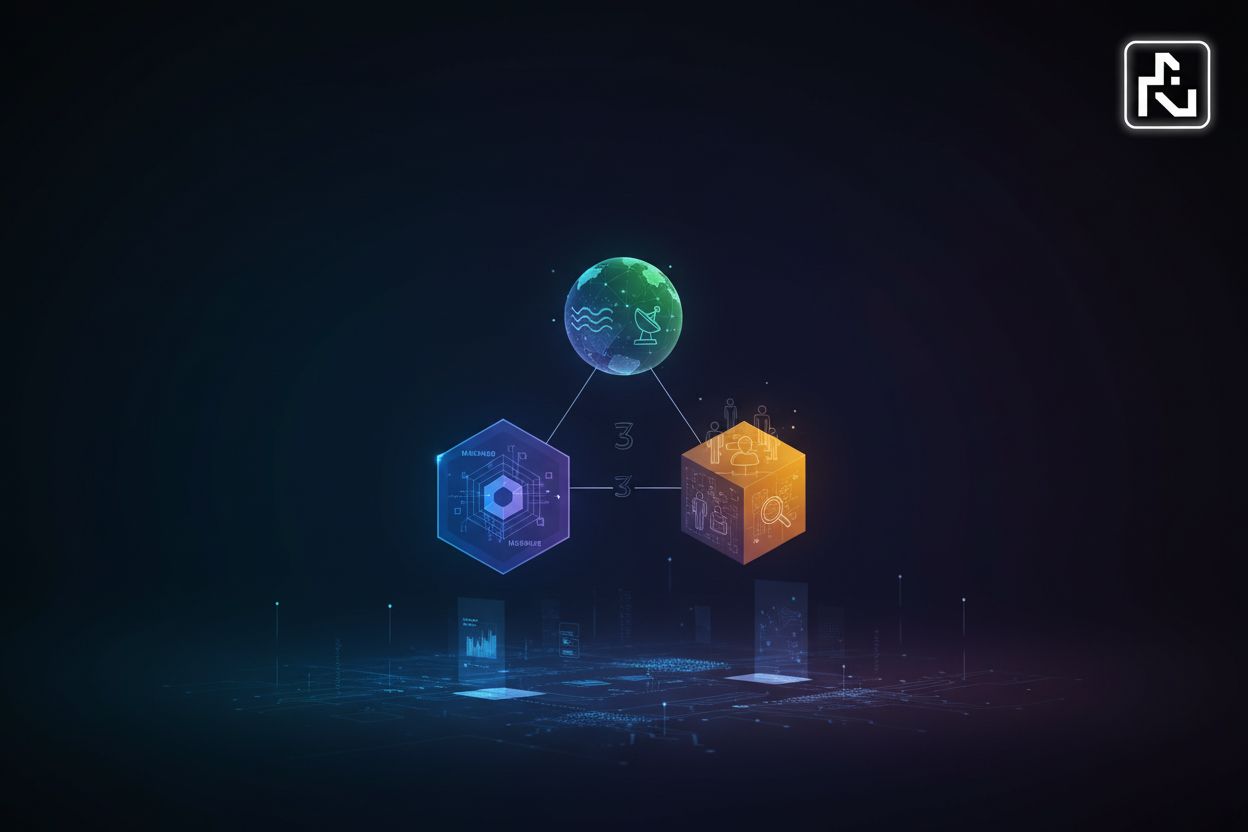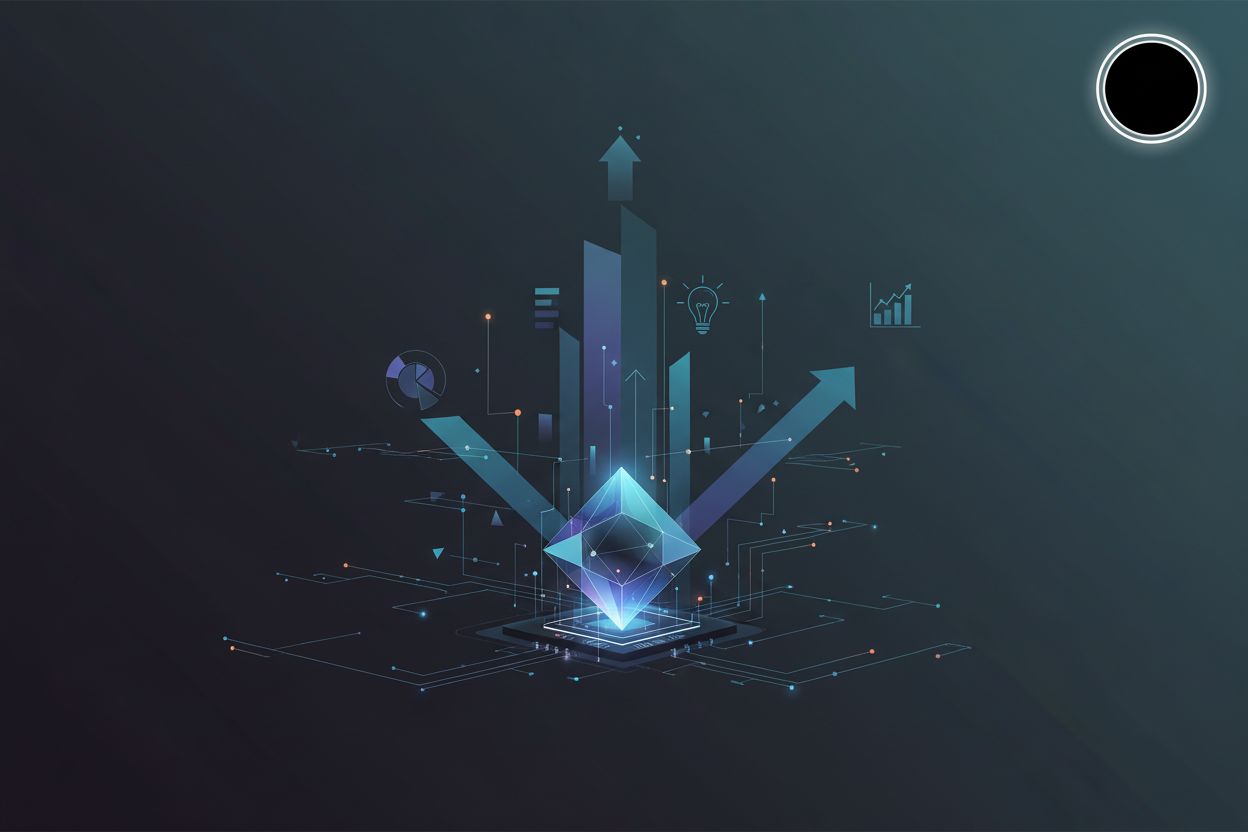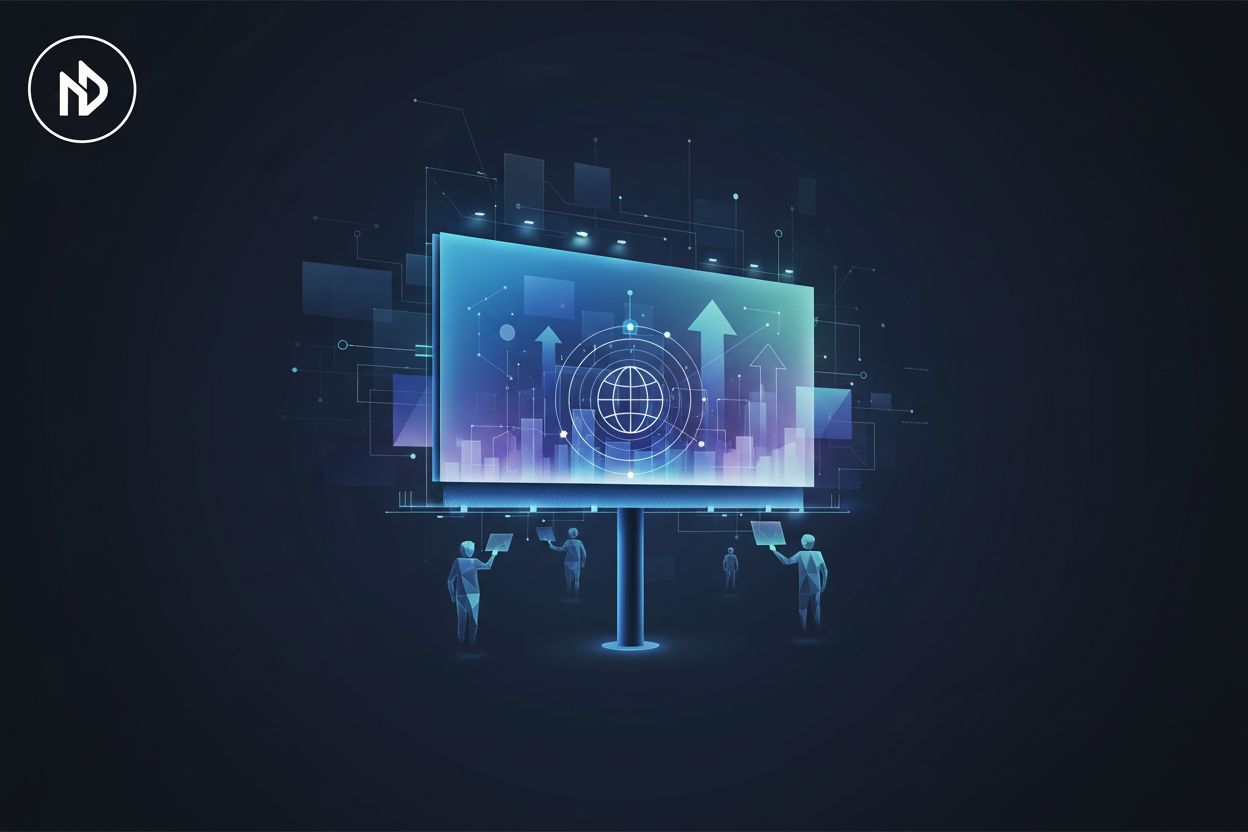NFTs: Revolutionizing Brand Loyalty Programs in the Digital Age
TL;DR
The Evolution of Brand Loyalty: From Points to NFTs
Brand loyalty is evolving, with consumers now seeking more than just transactional benefits. But how can brands adapt to this shift and create lasting connections?
Traditional points-based loyalty systems often fall short.
- They can suffer from decreasing customer engagement because rewards feel distant or irrelevant.
- Customers may perceive low value if points accumulate slowly or redemption options are limited.
- Many programs lack personalization, treating all members the same regardless of individual preferences. For instance, a generic discount on furniture might not appeal to a customer primarily interested in home decor items.
- Points programs may also struggle with high breakage, where points go unredeemed, signaling a disconnect between the program and customer needs.
Ultimately, there's a clear need for innovation to reinvigorate loyalty strategies and meet changing customer expectations.
NFTs (Non-Fungible Tokens) offer a novel approach to brand loyalty.
- They are unique, verifiable digital assets that can represent a variety of things.
- An NFT can represent membership in an exclusive club, offering access to special events or products.
- NFTs can also be used to deliver unique rewards, like digital art or virtual experiences, that go beyond traditional discounts. Imagine a healthcare provider issuing an NFT that grants access to a premium telehealth service.
NFTs bring several advantages over traditional loyalty points.
- Scarcity and exclusivity are built-in, making rewards more desirable. Unlike points, NFTs can be designed as limited editions, increasing their perceived value.
- Customers gain enhanced ownership and control, as they can trade or sell their NFTs on secondary markets. This adds a new dimension of value beyond simple redemption.
- The unique nature of NFTs can drive increased engagement and brand affinity. It gives customers a tangible connection to the brand and its community.
As brands look to the future, NFTs present a compelling opportunity to transform loyalty programs and build stronger customer relationships. Next, we'll look at the specific benefits of NFTs for enhancing brand loyalty.
Benefits of NFT-Based Loyalty Programs
NFTs are more than just digital collectibles; they're a new way to build lasting relationships with your audience. Let's explore how these unique digital assets can revolutionize brand loyalty programs.
NFT-based loyalty programs excel at boosting customer engagement through collectible NFTs and tiered rewards. Imagine a gaming company issuing unique NFTs to players who reach certain milestones. These NFTs could unlock exclusive in-game content, early access to new releases, or even physical merchandise.
- Creating collectible NFTs adds a layer of scarcity and desirability, making rewards more appealing than traditional points The Best Customer Loyalty Schemes in 2025 | Top 20 Examples.
- Tiered rewards systems, like the one used by Sephora, can also be implemented with NFTs, granting increasingly valuable benefits to holders of higher-tier tokens.
Integrating NFTs into interactive experiences and games further enhances engagement. A healthcare provider, for example, could issue NFTs that grant access to exclusive wellness programs or virtual consultations with specialists.
- These NFTs could evolve over time, gaining new attributes or functionalities based on the user's participation and progress.
- Rarity also plays a crucial role. Limited edition NFTs, or those with unique attributes, can become highly sought after, driving ongoing engagement and brand affinity.
NFTs can drive ongoing engagement through their rarity and utility. Think of a fashion brand releasing a series of NFTs that act as tickets to exclusive fashion shows or grant early access to limited-edition collections. This not only rewards loyal customers but also creates buzz and anticipation around the brand.
Imagine a coffee chain issuing NFTs that represent "lifetime coffee passes," granting holders a free cup of coffee every day for life. Or consider a retailer using NFTs to create a digital scavenger hunt, with each NFT unlocking a discount or exclusive product.
NFTs are not just about rewards; they're about creating memorable experiences and fostering a sense of community.
By leveraging the unique capabilities of NFTs, brands can create loyalty programs that are engaging, rewarding, and truly innovative.
Next, we'll explore how NFTs can be used to build brand storytelling and community.
Strategic Framework for Implementing NFT Loyalty Programs
Implementing an NFT loyalty program requires careful planning and a structured approach. Let's explore a strategic framework.
First, brands must pinpoint specific goals for their NFT loyalty program. Are they aiming to increase customer retention, drive engagement, or attract a new demographic?
Understanding the target audience's preferences is equally important. What kind of rewards resonate with them? What are their values and interests?
The next step involves designing visually appealing NFTs that customers will value. Brands should consider factors like rarity, aesthetics, and brand identity.
Also, defining the utility of each NFT is crucial. What benefits will holders receive? Exclusive content, early access, discounts, or unique experiences?
Selecting the appropriate blockchain is a key technical decision. Brands must weigh options like Ethereum and Polygon.
Each has different trade-offs in terms of transaction fees, scalability, and security. It may also be useful to compare public versus private blockchains.
GetDigitize specializes in crafting innovative brand strategies and digital marketing campaigns that seamlessly integrate NFT loyalty programs.
Leverage our expertise in website and UI/UX design to create engaging platforms for your NFT initiatives, enhancing user experience and driving adoption.
Our copywriting and content planning services ensure your brand story resonates with your audience, fostering a strong connection and driving loyalty through compelling NFT narratives.
These are some key steps to implementing NFT loyalty programs. Next, we'll explore how brands can use NFTs for brand storytelling and community building.
Real-World Examples of Successful NFT Loyalty Programs
NFTs are transforming brand loyalty, but how are companies putting them into practice? Let's explore some real-world examples of successful NFT loyalty programs and the strategies behind them.
Many brands are experimenting with NFTs to enhance customer engagement. These programs offer a glimpse into the future of brand loyalty.
- Exclusive NFT Rewards: Imagine a luxury fashion brand issuing NFTs that grant access to exclusive events or limited-edition merchandise. This creates a sense of scarcity and desirability, making the rewards more appealing than traditional discounts.
- NFT Memberships: Consider a members-only club using NFTs as digital membership cards. These NFTs would unlock exclusive content, early access to product releases, and invitations to private events.
- Gamified NFT Experiences: Think of a gaming company integrating NFTs into its games, offering unique in-game items or characters that can be earned or traded. This adds a new layer of engagement and value for players.
The key to a successful NFT loyalty program is to create NFTs with real utility and value for customers. It's not just about issuing digital collectibles; it's about providing access to exclusive experiences, content, or products that customers truly want.
By focusing on utility and value, brands can create NFT loyalty programs that are engaging, rewarding, and sustainable.
One example is the potential use of NFTs in the healthcare industry, where patients could receive NFTs that grant access to premium telehealth services or discounts on wellness programs. This not only rewards loyal patients but also encourages them to take an active role in their health.
These real-world applications demonstrate the versatility and potential of NFTs in transforming brand loyalty programs.
As brands continue to explore the possibilities of NFTs, we can expect to see even more innovative and engaging loyalty programs emerge. Next, we'll explore how NFTs can be used for brand storytelling and community building.
Overcoming Challenges and Mitigating Risks
NFTs offer exciting possibilities for brand loyalty, but implementing them isn't without challenges. What are the potential pitfalls, and how can brands navigate them effectively?
The regulatory landscape surrounding NFTs is still evolving, creating uncertainty for brands.
- Brands should seek legal counsel to ensure compliance with securities laws, data privacy regulations, and consumer protection laws.
- For example, NFTs that offer profit-sharing or represent ownership in a company may be subject to securities regulations.
- Additionally, brands must be transparent about the terms and conditions of NFT ownership, including any limitations or restrictions on their use.
The environmental impact of some blockchains is a growing concern for environmentally conscious consumers.
- Brands should opt for energy-efficient blockchain solutions like Proof-of-Stake (PoS) networks, which consume significantly less energy than Proof-of-Work (PoW) systems.
- Another option is to offset carbon emissions associated with NFT minting and transactions through carbon credits or investments in renewable energy projects.
- Promoting responsible NFT practices, such as reducing the size of NFT files and optimizing smart contract code, can also help minimize environmental impact.
NFTs are susceptible to fraud and security breaches, which can damage brand reputation and erode customer trust.
- To combat fraud, brands must implement robust security measures to protect NFT assets, including multi-factor authentication, cold storage wallets, and regular security audits.
- It's also crucial to educate customers about common scams and phishing attacks, providing clear guidelines for NFT ownership and transfer.
- Clear guidelines for NFT ownership and transfer and providing customer support channels to address security concerns can help mitigate risks and build confidence in the program.
Careful planning and proactive measures can help brands overcome these challenges and harness the full potential of NFT-based loyalty programs. Next, we'll explore how NFTs can be used for brand storytelling and community building.
The Future of NFT Loyalty Programs
NFT loyalty programs are not static; they are evolving with emerging trends and technological advancements. What does the future hold for these innovative programs, and how will they shape brand-customer relationships?
Several key trends are shaping the future of NFT loyalty programs:
- Fractionalized NFTs allow shared ownership of high-value assets. Instead of one expensive NFT, multiple customers can own a fraction, lowering the barrier to entry and fostering broader participation. For example, a luxury resort could fractionalize an NFT representing a villa, allowing multiple members to co-own it and share its benefits.
- Dynamic NFTs evolve based on customer behavior and engagement. As customers interact with a brand, their NFT changes, unlocking new rewards or benefits. Imagine a fitness app issuing NFTs that gain attributes based on workout frequency and milestones, incentivizing continued activity.
- Integration with the metaverse creates immersive and interactive loyalty experiences. Brands can offer virtual events, exclusive digital merchandise, and unique rewards within metaverse environments. A fashion brand could provide NFT holders with access to a virtual runway show and the ability to purchase exclusive virtual apparel.
Artificial intelligence (AI) is poised to revolutionize NFT loyalty programs.
- AI can analyze customer data to tailor NFT rewards to individual preferences. By understanding customer behavior, AI can recommend relevant rewards, increasing engagement. For instance, an AI could analyze a customer's purchase history and suggest an NFT that unlocks access to a specific product line they frequently buy.
- AI can generate unique NFTs based on individual customer data. These personalized NFTs could represent a customer's unique history with a brand, creating a deeper emotional connection.
- AI-powered insights can enhance the overall NFT experience. By analyzing user interactions and feedback, AI can optimize the design and utility of NFTs, ensuring they remain engaging and valuable.
NFTs are integral to the development of Web3 loyalty ecosystems.
- Interoperability between different NFT loyalty programs will allow customers to use their NFTs across various brands and platforms. This creates a more seamless and rewarding experience.
- Decentralized ownership and control empower customers, giving them greater autonomy over their loyalty assets. Customers can manage their NFTs through decentralized wallets, ensuring they retain control over their digital assets.
- This creates a more immersive and rewarding loyalty experience, where customers can truly own their loyalty and participate in a decentralized ecosystem.
As NFT technology continues to mature, we can expect to see even more innovative and engaging loyalty programs emerge. Next, we'll explore how NFTs can be used for brand storytelling and community building.
Actionable Insights for Brand Managers and CMOs
NFT-based loyalty programs are more than just a trend; they represent a fundamental shift in how brands engage with customers. But how can brand managers and CMOs translate this potential into actionable strategies?
Here are some key considerations and insights to guide your journey into the world of NFT loyalty programs.
Before diving in, it's essential to assess your brand's readiness and resources. Do you have the technical expertise, marketing capabilities, and financial resources to develop and manage an NFT program?
- Conducting thorough research and planning is critical. Understand the legal and regulatory landscape surrounding NFTs, including securities laws and consumer protection regulations.
- Build a strong internal team with NFT expertise. This team should encompass members with skills in blockchain technology, marketing, community management, and legal compliance.
Once your NFT loyalty program is live, it's essential to track key metrics.
- Monitor metrics such as NFT sales, engagement rates, and customer retention. Also, keep an eye on the volume of trading on secondary markets.
- Analyze data to identify areas for improvement. What types of NFTs are most popular? Which rewards drive the most engagement?
- Continuously iterate and evolve the NFT loyalty program based on data-driven insights. This may involve adjusting reward structures, refining NFT designs, or exploring new use cases.
NFTs offer a unique opportunity to create more engaging, rewarding, and personalized loyalty experiences.
- Early adopters will gain a competitive advantage in building stronger customer relationships and fostering brand loyalty. As mentioned earlier, loyalty programs can significantly influence customer behavior.
84% of consumers are more likely to stick with a brand that offers a loyalty program.
- The time to explore and experiment with NFT loyalty programs is now. By taking a strategic and data-driven approach, brands can unlock the full potential of NFTs and revolutionize their loyalty strategies.
As you embark on this transformative journey, remember that the future of brand loyalty is not just about transactions; it's about building lasting connections and creating shared experiences with your customers.








